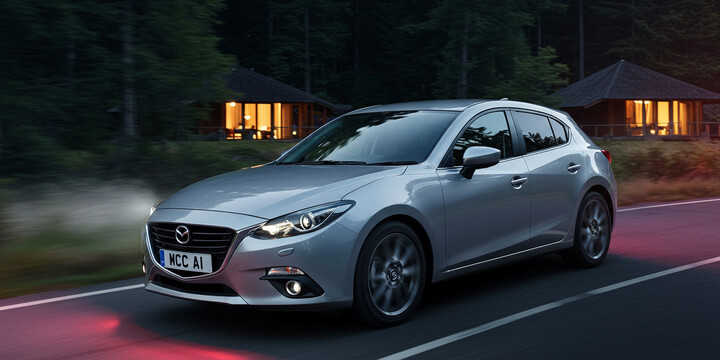
MAZDA 3 (2013-16)
The MAZDA 3 (2013-16) is a popular hatchback that strikes a great balance between stylish design, driving enjoyment, and practicality. Well-suited for city dwellers, small families, and those looking for a reliable, fuel-efficient compact car, the Mazda 3 from this period offers a comfortable ride with a reputation for fun handling and impressive build quality. It is often chosen by first-time buyers or those seeking an economical yet attractive vehicle, making it a staple in the used car market.
What sets the Mazda 3 (2013-16) apart is its sleek exterior, well-designed interior, and strong reputation for reliability. It boasts good fuel economy and low running costs, appealing to budget-conscious drivers. Compared to rivals, it is noted for its sharp handling and refined driving experience. With an average private sale valuation of around £7,099 and a typical mileage of just under 60,000 miles, this model remains a compelling choice for anyone looking for a reliable, stylish, and versatile used car in the UK.

average use

The data indicates that most Mazda 3 (2013-16) vehicles have mileage readings clustered in the 60,000 to 80,000 miles range, accounting for roughly 21.2% of the vehicle sample. Notably, smaller proportions of vehicles have very low mileage (0-20,000 miles) at around 3.6%, and high mileage vehicles exceeding 150,000 miles represent less than 2%. The distribution shows a gradual decrease in the number of vehicles as mileage increases beyond 80,000 miles, suggesting that higher-mileage cars are relatively rare within this model. This pattern provides insight into typical usage levels and could assist buyers or sellers in understanding what to expect regarding mileage for this vehicle type.

vehicle values

The data provided outlines the distribution of private sale prices for Mazda 3 (2013-16) vehicles in the UK. Notably, the most common price range is between £5,000 and £6,000, accounting for 27.4% of sales, followed by £4,000 to £5,000 at 24.6%. There are smaller proportions of vehicles sold below £3,000, with only minimal data points above £8,000, indicating that the majority of private sales cluster in the £4,000 to £6,000 range. Interestingly, very few vehicles sell for over £9,000, suggesting limited high-value transactions for this model in the private market.

production years

The data indicates that the majority of Mazda 3 vehicles from the 2013-2016 range were manufactured between 2014 and 2016, with 30.8% from 2015 and 25.5% from 2016. Notably, only a negligible 0.3% of the vehicles are from 2013, suggesting very few early models remain in the used market. Additionally, there is some presence of slightly newer models, with 12.9% manufactured in 2017 and 7.4% in 2018, indicating ongoing supply and possibly recent registrations or imports beyond the original production years. Overall, the data suggests that most available vehicles date from 2014 to 2016.

colour popularity

The data indicates that for the Mazda 3 models produced between 2013 and 2016, red and white are the most popular paint colours, each accounting for 23.4% of vehicles. Blue and black are also common, representing approximately 15% each, while grey has a similar share at 15.1%. Silver is less prevalent, making up 7.4% of the vehicle colours. Notably, red and white are equally the most chosen colours among this model range.

ownership cycle

The data indicates that the majority of Mazda 3 vehicles from 2013-16 have been registered with two or three keepers, accounting for 33.5% and 27.1% respectively. Notably, a significant portion—over 19%—have had only four registered keepers, suggesting some vehicles tend to change hands a few times. Conversely, vehicles with a high number of keepers, such as eight or nine, are quite rare, each representing less than 1% of the sample. Overall, this distribution hints at relatively moderate turnover, with most vehicles staying with a small number of owners over their lifespan.

engine choices

The data indicates that among Mazda 3 models from 2013 to 2016, the most common engine capacity is 1998cc, accounting for approximately 62.8% of vehicles, followed by 2191cc at 21.2%, 2184cc at 9.2%, and 1496cc at 6.8%. Regarding fuel types, a significant majority of vehicles (64.9%) run on petrol, while 35.1% are diesel-powered. This suggests that petrol engines are slightly more prevalent in this model range, and most vehicles tend to feature the 2.0L engine capacity.












